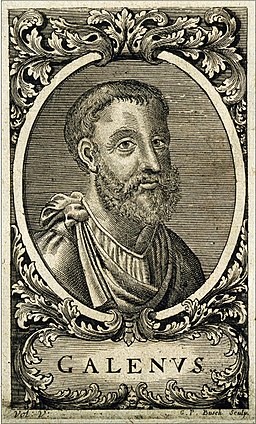Introduction to Pharmacognosy.
Definition of Pharmacognosy:
Pharmacognosy is the branch of pharmacy that deals with the study of crude drugs of natural origins.
However, the study of pharmacognosy has a major focus on History, cultivation collection, standardization, preparation of market, uses of drug etc.
Crude Drugs:
- The drugs of natural origin which have not undergone any pharmaceutical processes rather than drying are called as "Crude drugs".
Sources of crude drugs:
- The crude drugs can be obtained from various sources like,
- Plant Source: e.g. Tulasi, Neem, Vasaka etc.
- Animal Source: e.g. Beeswax, Cod Liver Oil, Shark Liver Oil etc.
- Mineral Source: e.g. Liq. Paraffin, Bentonite, Kaoline etc.
History Of Pharmacognosy:
Ancient Era
- The origin of the use of natural substances as medicines is time immemorial.
- In all the records of ancient civilizations of the world, we can found records of natural substances used as drugs at that time also.
- The notable civilizations in these regards are, Indian, Egyptian and Chinese.
- Egyptian people at that time possessed a great knowledge of herbal, animal and mineral drugs and used a lot of them for different purposes like as medicines, cosmetics etc e.g. Belladonna a poisonous herb was used as mydriatic to get bigger eye effect by ancient Egyptian ladies.
- Chinese with their own developed system of medicine used a lot of drugs and were having a cure for lot of ailments, the drug Ginseng was used popularly to improve stamina of the kings and the drug was claimed as an antiaging drug at that time.
- Surpassing to all Indians were having very well developed system of medicine called as "Ayurveda" (The science of Life). Indians were known to perform surgeries and having a rich recorded data of medicinal properties of herbs e.g Charak Samhita.
Medieval Era
- Sushruta was a great ancient physician and was a son of great sage Vishwamitra.
- He was also the author of "Sushruta Samhita" one of the most comprehensive book on medicine ( containing 1,120 illnesses, 700 medicinal plants, 64 preparations from mineral sources and 57 preparations based on animal sources.)
- He is known for his tremendous work in the field of medicine and surgery is called as "Father of Surgery."
- Hippocrates was an aancientGreek scholar known for his works in different faculties as called as "Father of Medicine" due to his notable work in medicine, surgery.
- He introduced an oath for physicians at his time is till used in an honor to him.
- He was the first person who believed that diseases caused naturally and Gods has nothing to do with diseases and hence separated Religion from medicine.
- Charak was a great ancient Indian physician.
- He was the first physician in the world giving the concept of "Prevention is the better than cure".
- He was the author of "Charak Samhita" and is considered as one of the great contributors to Ayurveda.
- He is well known for his contribution in Physiology, Embryology, and etiology.
- Galen was a greek physician, surgeon, and philosopher of the roman empire.
- He discovered the art of extraction of crude drugs and preparing different pharmaceutical products like tinctures.

- In honor of his work he is called as "First Pharmacist" and branch of extraction of crude drugs as "Galenical Pharmacy".
Indigenous Systems of Medicine:
- The systems of medicines developed by native people are called as Indigenous systems of medicines.
Ayurveda:
- Ayur means "life" and Veda means "science" and hence Ayurveda means "Science of life."
- Ayurveda is the Indigenous system developed by ancient Indian scientists the time when it was prepared is not traceable.
- Ayurveda focuses into keeping structural and functional entities of the body in a state of equilibrium stating as a good health.
- As per philosophy of Ayurveda, the body is made of five basic elements 1) Jal (water), 2) Agni (fire), 3) Aakash (space), 4) Vayu (air), and 5) Prithvi (solid), called as "Pnachmahabhutas".
- Any imbalance between panchmahabhutas give rise to a "dosha" (defect).
- There are three main doshas 1) Kafa, 2) Pitta, 3) Vata. called as "Tridoshas".
- These tridoshas affect 7 elements of our body structure called as "Saptadhatus".
- The spatadhatus are 1) Asthi (bone) 2) Majja (bonemarrow), 3) Meda (fat), 4) Shukra, 5) Rakta (blood), 6) Mansa (flesh).
- The Ayurvedic writings has many renowned books some important of them are:
- Charaka Samhita
- Sushruta Samhita
- Astanga samhita.
The oldest writing was Charaka Samhita (6-700 years BC). - The book describes uses of many metallic drugs also e.g., iron, mercury, sulphur, copper etc with herbs.
The Egyptian System of medicine:
- This is originated in Mesopotamia and Egypt. Mesopotamia is considered as the first origin of human civilization.
- The Sumerians (people of ancient Mesopotamia) developed cuneiform tablet of herbal medicines.
- Those tablets are preserved in British museum.
- In Egypt, information had been written on paper – Papyrus ebers (1600BC).
- It consisted of 800 prescriptions, mentioning 700 drugs.
The orient (2700 BC):
- This is originated from Chinese, Japanese and Tibetians etc.
- The orient herbalism was very old (142 – 220 BC) and called “Kampo”.
- The written documents were made by the King ‘Shen Nung’ (2700 BC) and Shang dynasty (1766 – 1122 BC) etc.
- Shen Nung investigated medicinal value of several herbs and wrote a book – “Pen T-Sao” or native herbal.
Unani (Arabic) System of Medicine:
- This herbal system was developed by Arabian Muslim Ibn Sina (980 – 1037 AD).
- He was a prince and ruler.
- He wass pharmacist and physician who wrote a book – “Kitab-Al-Shifa”, meaning ‘Book of Healing’.
- The book was written in Arabic language.
Labels: Pharmacognosy









<< Home